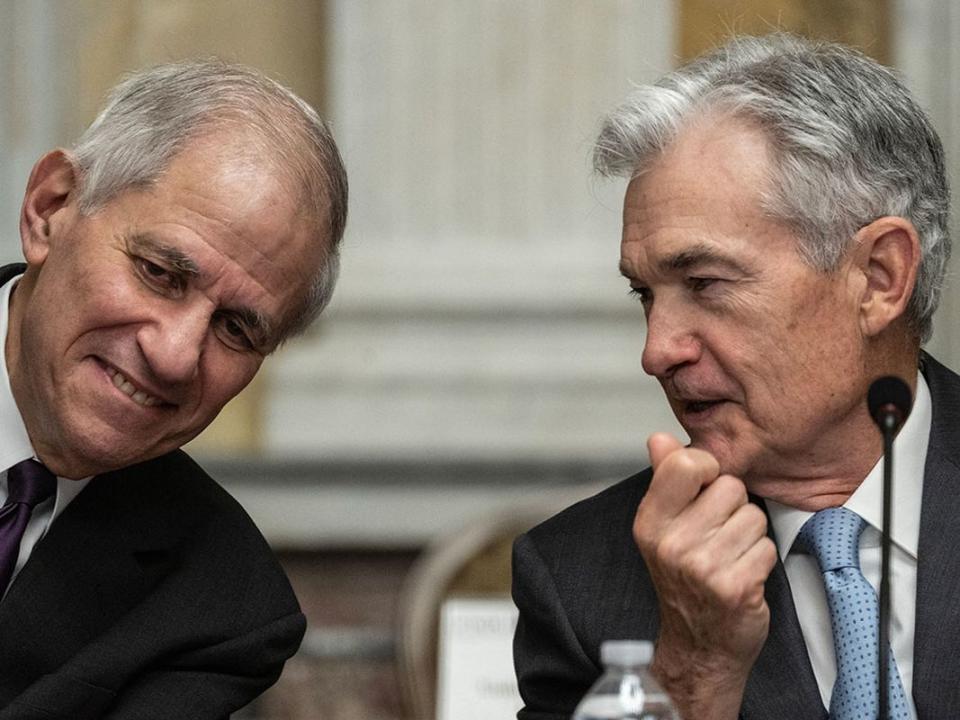David Rosenberg: Privately, the Fed is far less hawkish than it looks

The next key U.S. data point for the markets doesn’t come out until May 31, when we get the April release of the headline and core personal consumption expenditure (PCE) price deflators. I sense the numbers are going to be rather encouraging, and I’ll tell you why: It is because of the critical components of the producer price index (PPI) that feed into the PCE deflator data.
For example, while residential rents are less than half the share of the consumer price index (CPI), in the PCE deflator (at 15 per cent versus 36 per cent), they are still highly influential. The lags were long three years ago when rents in real time were surging, but not being captured in the official data, and now it is payback time as we wait for the disinflation in rental rates in the real world to show through more forcefully in the government data.
But all that separates a spectacular decline in headline and core inflation are the lags. The spread between the BLS all-rental price index, at 5.4 per cent (while slower than 7.2 per cent a year ago, it is still much higher than the three per cent pre-COVID-19 trend), and the new tenant rent index at 0.4 per cent (versus 2.4 per cent a year ago and 11.7 per cent two years ago) is massive. That near-zero trajectory in the new tenant rental index, by the way, is the softest since the second quarter of 2010.
It typically takes a year for the all-tenant index to play catch-up or, in this case, catch-down, to the new tenant index, and the current five percentage point gap on a year-over-year basis is unprecedented. The long-run average spread — you might have guessed it — is nearly zero. Ergo, the potential for a major move down in headline and core inflation in the coming year is substantial, which is one reason why our proprietary bond model recommended duration exposure this past month.
Of course, nobody we talk to seems to believe that inflation can come down, and that includes many folks at the nervous-Nellie United States Federal Reserve. But I will tell you why it is that inflation (on the surface) appears to be so high today. It is because people tend to conflate levels with rates of change. Prices are high, they say, so they think inflation is high. But prices are levels, and inflation is a rate of change. They are not the same.
Paul Volcker never managed to bring prices down, even after they doubled in the decade before he came on board as Fed chair. They actually rose nearly 40 per cent during his seven-year tenure as head of the Fed from 1979 to 1986. What he managed to do — and what made him a legend — was that he took the inflation rate down from more than 14 per cent to below four per cent. That is why he is in the central banking hall of fame — not for killing prices, but for killing inflation.
When inflation was raging, and prices were spiralling upward during and immediately after the spread of COVID-19 subsided, nobody seemed to mind too much and accepted the price hikes in the broad retail sector because the excess personal savings provided such a huge cushion. At the inflation peak of 2022, those excess savings were still close to US$2 trillion, so people could afford to pay those higher prices and didn’t seem to feel it too much.
But those excess savings are now all gone; more than 100 per cent of that cushion has already been spent. Even with inflation receding from the 9.1 per cent year-over-year peak in 2022 to 3.4 per cent currently, the fact that the price level is 16 per cent higher now than it was in the summer of 2021, when the excess savings cushion peaked, is biting hard.
It is also why so many components of the CPI or PCE deflator are now actually going down and have been camouflaged of late from the sharp rise in insurance premiums and the way the BLS treats rents in the official data. Remember: the Federal Reserve Bank of Atlanta’s own measure of “core flexible” consumer prices has moved into outright deflation over the past two months.
Yes, yes, the central bank doesn’t mention this, because if it does, the markets will go hog wild and start to price in six rate cuts again, as was the case earlier this year. The Fed knows everything I am saying here, but cannot sound dovish right now because the litmus test of what happened five months ago shows that investors tend to radically front-run and overplay even the most nuanced messages from the central bank.
Privately, the Fed is far less hawkish than its outward appearance suggests. That is simply human nature at play and trying to keep the exuberance in the marketplace at a less hyperactive level.
But we can see what is happening across the gamut of retailers in their recent earnings reports. The executives running these companies know that with excess savings gone, they have to start keeping prices steady or roll some of the increases back in order to prevent a decline in sales volumes, which the most recent retail sales data clearly showed happening (minus 0.3 per cent month over month in April and now running below a minus 2.2 per cent annual rate over the past six months).
David Rosenberg is founder and president of independent research firm Rosenberg Research & Associates Inc. To receive more of David Rosenberg’s insights and analysis, you can sign up for a complimentary, one-month trial on the Rosenberg Research website.
Bookmark our website and support our journalism: Don’t miss the business news you need to know — add financialpost.com to your bookmarks and sign up for our newsletters here.

 Yahoo Finance
Yahoo Finance 